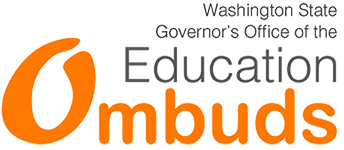What is a Disability?
“Disability is a natural part of the human experience and in no way diminishes the right of individuals to participate in or contribute to society.”
--Individuals with Disabilities Education Act, 20 U.S.C. §1400(c).
There are many different ways that people, and our laws, define “disability.”
There are also many different cultural perspectives on disability, and our understanding of disability has changed over time. Check out the One Out of Five: Disability History and Pride Project materials to learn more disability history and the development of positive disability identity.
For students in public schools, two federal laws – the Individuals with Disabilities Education Act, or “IDEA” and Section 504 of the Rehabilitation Act, or “Section 504” – give rights and protections to students with disabilities. Each of those laws includes a different definition for a child with a disability.
IDEA Definition of Disability
The IDEA gives eligible students the right to have an IEP (Individualized Education Program). It defines a “child with a disability,” as a child who has been evaluated, and found to:
- Have a disability as defined in one of 14 specific categories, and
- Because of the disability and an adverse educational impact,
- needs special education and related services.
In Washington state, the categories of disabilities and the specific definition for each one, are listed in our state regulations, the Washington Administrative Code, at WAC 392-172A-01035
They include:
- Autism
- Deafblindness
- Deafness
- Developmental delay
- Emotional/behavioral disability
- Hard of hearing
- Intellectual disability
- Multiple disabilities
- Orthopedic impairment
- Other health impairment
- Specific learning disability
- Speech or language impairment
- Traumatic brain injury
- Visual impairment including blindness
Each of these categories has a specific definition in the special education rules. If you are wondering if a child might have a disability that would fit within one of these categories it is a good idea to read the specific definitions or ask someone to review them with you. The definitions are available online at WAC 392-172A-01035, at https://apps.leg.wa.gov/WAC/default.aspx?cite=392-172A&full=true#392-172A-01035.
If a child has one of the disabilities defined in the IDEA but only needs a “related service” or “accommodations” and not “special education” then the student will not be eligible for an IEP but may need a Section 504 plan.
Section 504 Definition of Disability
Section 504 prohibits school districts from discriminating against people with disabilities. It requires districts to provide the special education, accommodations, services or supports a student needs to equally access an education. It defines a student with a disability as a student with:
- A physical or mental impairment that
- Substantially limits
- One or more major life activities.
You can find more information about Section 504 in a set of FAQs posted on the U.S. Department of Education’s Office for Civil Rights (OCR) website, here: https://www.ed.gov/laws-and-policy/civil-rights-laws/disability-discrimination/frequently-asked-questions-disability-discrimination.
OCR also has information available online that addresses “The Civil Rights of Students with Hidden Disabilities Under Section 504 of the Rehabilitation Act of 1973.” https://www2.ed.gov/about/offices/list/ocr/docs/hq5269.html. It outlines various conditions that may not be readily apparent to others but may still impact a student at school.
What is the relationship between IDEA and Section 504?

Under both laws, school districts are required to provide disabled students with a Free Appropriate Public Education, referred to as FAPE. This means that districts must provide a range of services to meet the individual needs of students who have trouble succeeding in school because of a disability.
Section 504 provides services for a broader group of students than IDEA because it has a broader definition of “disability.” So, if a student meets the eligibility requirements for IDEA and qualifies for an IEP, the student is also protected by Section 504. But, there are many students that are protected by Section 504, and have a Section 504 plan, but don’t need special education and are not eligible for an IEP under the IDEA.
One way to think about the relationship of the two laws is to think of all students: first, some of those students have disabilities (Section 504); some smaller number of those students have a disability and need special education (IDEA).
Above is a picture with a large circle representing all students. The medium-size circle inside the big circle represents the students who have disabilities and qualify for Section 504 services. Of that group, a smaller group is also qualified for services under IDEA. The key thing to remember about this graph is that students in the smaller circles are also part of the big group: all students. They all have the same rights as all students, plus protections against discrimination for having a disability, including access to the services they need to participate in school.
Students who are protected by Section 504 and qualify for an IEP will generally have only an IEP. Everything that would be in a 504 plan should be included in the IEP, often on the accommodations page or in a list of related or supplementary services or supports.
Every child who is eligible for an IEP is also protected by Section 504. Why does that matter?
Section 504 prohibits discrimination against students on the basis of disability. Discrimination can happen when a program excludes otherwise qualified students because they have a disability, or when a student is harassed because of his or her disability and a district does not take reasonable steps to respond to the harassment.
If you believe a district has discriminated against a person because of disability, find more information about options for formal complaints on our Discrimination page.
